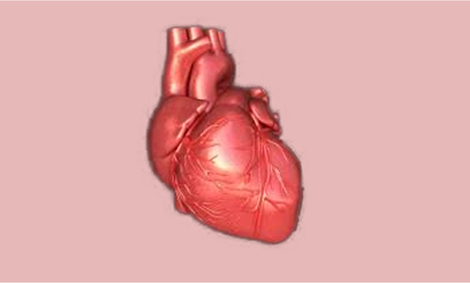A study by a team of scientists from Birla Institute of Technology, Mesra, Jharkhand and KIIT University, Bhubaneswar has found a possible way to correct a life-threatening heart anomaly caused by improper electrical activity in the heart, which could lead to erratic heartbeats.
Mesra, Jharkhand (ISW) – CPVT – Catecholaminergic Polymorphic Ventricular Tachycardia– is a life-threatening heart anomaly caused due to improper electrical activity in the heart. Intense physical strain or emotional stress leads to erratic heartbeats.
Calcium ions are stored in cell structures of the heart muscles. When they move to and fro, a potential gradient is created which triggers the muscles to contract and relax. A protein known as cardiac Calsequestrin (CASQ2) regulates these rhythmic movements by polymerising or binding to calcium ions. In the next heartbeat, the heart relaxes normally by quick removal of the ions or depolymerising of CASQ2.
In CPVT, genetic mutations cause defects in CASQ2 protein structure, rendering it unstable. This leads to improper beat-to-beat function of the heart.
A pilot study by Indian researchers explored the possibility of correcting the defective structure of CASQ2. They hypothesised that by suitably introducing small external molecules called pyranones that may attach to the protein interfaces would help in stabilising it, in turn, regulating the ion flow.
Preliminary results indicate that the synthesised molecules bind well to the protein and facilitate the transfer of calcium ions. In the study, computer simulations were done first to ascertain ability of the molecules to adhere to CASQ2. After which, 24 small molecules were synthesised.
“Using molecular docking method to design, we synthesised a molecule that had the potential to interact with CASQ2. We then tried to obtain binding mode of the molecule, with the highest biological potential, and found the position at the structure interface which is the key step in CASQ2 polymerisation,” explained Dr Harapriya Chakravarty of the Birla Institute of Technology, Mesra in Jharkhand and the first author of the study
Next, different gradients of calcium ions were added to purified CASQ2 in a buffer medium to induce polymerisation and the uptake was assessed. Depolymerisation of CASQ2 was simulated by using a chemical– Ethylene Glycol Tetra-acetic Acid or ETGA — which exhibits high affinity to calcium ions. The polymerised CASQ2 protein was found to release the ions in the presence of EGTA. From this, the specific concentration of synthesised molecules that would initiate the re-absorption of the ions was derived.
“We tested the ability of the stabilised CASQ2 compound to resist the EGTA- induced depolymerisation. Fifteen out of 24 of the synthesised molecules were active in inhibiting depolymerisation of CASQ2 at low concentrations,” said Dr Naresh Bal, who was involved with biological evaluation tests.
Although it is established that CPVT arises due to altered calcium ion handling, the exact molecular details are still under investigation. This study is a preliminary effort to modify one of the key proteins involved in the process, he added.
The team of scientists from Birla Institute of Technology, Mesra, Jharkhand and KIIT University, Bhubaneswar is now looking to take the research forward with cellular studies.


